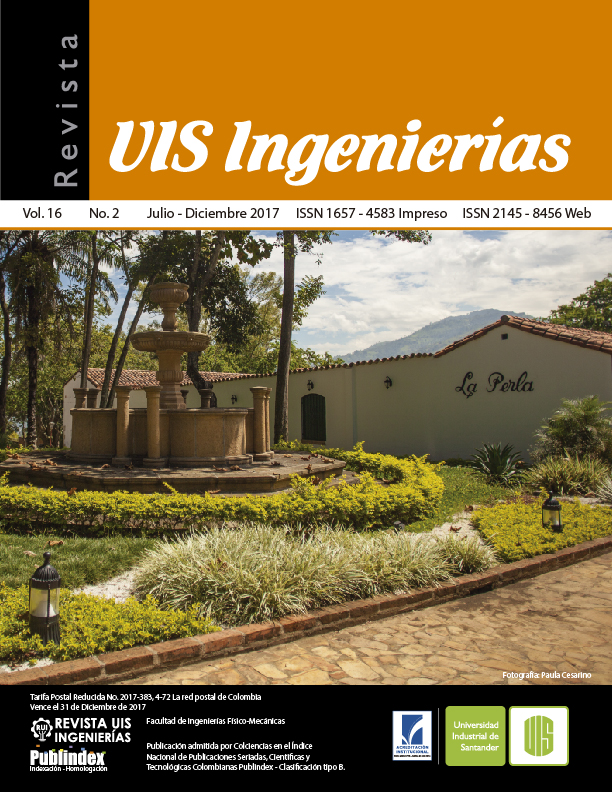Demand management in residential customers with impact assess-ment via opinion dynamics
Published 2017-05-15
Keywords
- Load displacement,
- opinion dynamics,
- electricity,
- energy,
- strategic end
- demand flexibility,
- demand management,
- graphs,
- influence,
- multiagent,
- demand response ...More
How to Cite
Abstract
A mechanism for demand management is proposed which consists of a combined incentive with first stage direct (monetary) incentive applied to a small group of users forming a seed; and a second stage where the seed’s influence on the total group is evaluated given the opinions’ weights attributed to other agents and the susceptibility to change of self-opinions. The main goal is to establish the range of feasible investment alternatives using the combined incentive, having into account the user’s budget constraints and the influence propagation through the user’s network, thus obtaining the relationship between consumption’ s increase, investment cost and payback period. We also propose practical study cases, with assessment of user’s flexibility potential in their aggregated load curves, achieving an 6.8% average power increase in the ideal case, and 2.65% when moderate participation is assumed with a videogames console as the new appliance. In a similar way, when the new appliance is an electric tankless water heater it is found an average power increase about 16% for the ideal case and around 7% when the model assumes moderate acceptance of the program.
Downloads
References
R. Albert and A.-L. Barabási, “Statistical mechanics of complex networks,” Rev. Mod. Phys., vol. 74, no. 1, pp. 47–97, Jan. 2002.
A.-L. Barabási and E. Bonabeau, “Scale-Free Networks,” Sci. Am., no. May, pp. 50–59, 2003.
A. V. Proskurnikov and R. Tempo, “A Tutorial on Modeling and Analysis of Dynamic Social Networks. Part I,” Annu. Rev. Control, vol. 43, pp. 65–79, 2017.
N. E. Friedkin and E. C. Johnsen, “Social Influence Networks and Opinion Change,” Adv. Gr. Process., vol. 16, pp. 1–29, 1999.
N. E. Friedkin, “A formal theory of social power,” The Journal of Mathematical Sociology, vol. 12, no. 2. pp. 103–126, 1986.
R. Hegselmann and U. Krause, “Opinion Dynamics and Bounded Confidence,” Simulation, vol. 5, no. 3, p. 2, 2002.
A. Mirtabatabaei, P. Jia, N. E. Friedkin, and F. Bullo, “On the reflected appraisals dynamics of influence networks with stubborn agents,” Proc. Am. Control Conf., pp. 3978–3983, 2014.
N. G. Mankiw, Principios de economía, 2nd ed. Madrid: McGraw Hill Interamericana de España, 2002.
N. Nisan, T. Roughgarden, E. Tardos, and V. V. Vazirani, Eds., Algorithmic Game Theory. Cambridge: Cambridge University Press, 2007.
M. A. Cortés Guzmán, “Diseño de un mecanismo para la gestión de la demanda de energía eléctrica aplicando control cooperativo y sistemas multi-agente,” Universidad Nacional de Colombia, Departamento de Ingeniería Eléctrica y Electrónica (en curso, no publicada), 2017.
Unidad de Planeación Minero Energética-UPME, “Proyección de la demanda de energía eléctrica y potencia máxima en Colombia.” Rev. Junio de 2016, Bogotá, pp. 25–31, 2016.
H. Gintis, S. Bowles, R. Boyd, and E. Fehr, Moral sentiments and material interests: The foundations of cooperation in economic life. MIT Press, 2005.
M. A. Cortés Guzmán and E. Mojica-Nava, “Mechanism design for demand response programs with financial and non-monetary (social) incentives,” Unpubl. Draft, pp. 1–8, 2017.
F. Clementi and M. Gallegati, “Pareto’s Law of Income Distribution: Evidence for Germany, the United Kingdom, and the United States,” in Econophysics of Wealth Distributions: Econophys-Kolkata I, A. Chatterjee, S. Yarlagadda, and B. K. Chakrabarti, Eds. Milano: Springer Milan, 2005, pp. 3–14.
E. L. Crow and K. Shimizu, Lognormal distributions: Theory and applications (Vol. 88). New York: M. Dekker, 1988.
N. L. Johnson, S. Kotz, and N. Balakrishnan, Continuous univariate distributions Vol. 1, 2nd ed. Wiley, 1994.
Observatorio de desarrollo económico, “Pobreza y desigualdad en Bogotá: resultados en los últimos años,” 2016-04-14. [Online]. Available: http://observatorio.desarrolloeconomico.gov.co/base/lectorpublic.php?id=838.
Departamento Administrativo Nacional de Estadística (DANE), “Ingresos y gastos de los hogares,” 2007. [Online]. Available: http://www.dane.gov.co/index.php/estadisticas-por-tema/pobreza-y-condiciones-de-vida/ingresos-y-gastos-de-los-hogares. [Accessed: 28-Sep-2017].
FinanzasPersonales.co, “¿Cuánto ganan en promedio los colombianos?” [Online]. Available: http://www.finanzaspersonales.co/trabajo-y-educacion/articulo/cuanto-ganan-promedio-colombianos/48375. [Accessed: 28-Sep-2017].
G. Osma Pinto and G. Ordoñéz Plata, “DESARROLLO SOSTENIBLE EN EDIFICACIONES,” Rev. UIS Ing., vol. 9, no. 1, 2010.
O. A. González, A. Pavas, S. Sánchez, Andrés Pavas, and Samir Sánchez, “Cuantificación del Ahorro de Energía Eléctrica en Clientes Residenciales Mediante Acciones de Gestión de Demanda,” UIS Ing., vol. 10, no. 2, pp. 1–8, 2017.
E. Moreno, O. A. Gonzalez, A. Pavas, and A. Moreno, Elkin;González, Orlando A; Pavas, “Demand Flexibility Assessment for Residential Customers,” in IEEE Workshop on Power Electronics and Power Quality Applications - PEPQA, 2017, p. 5.

